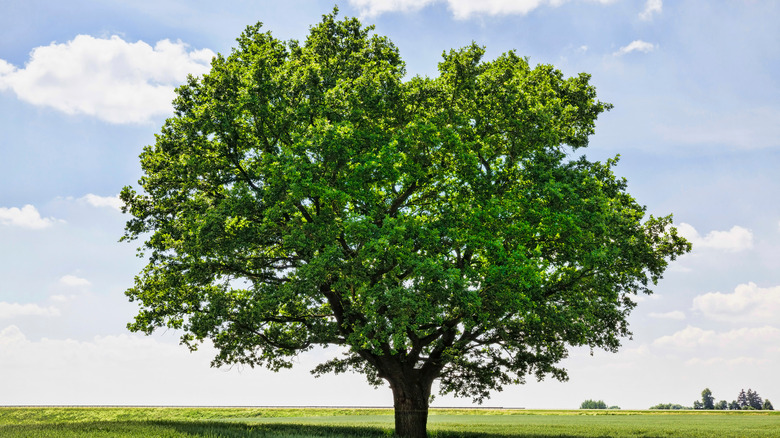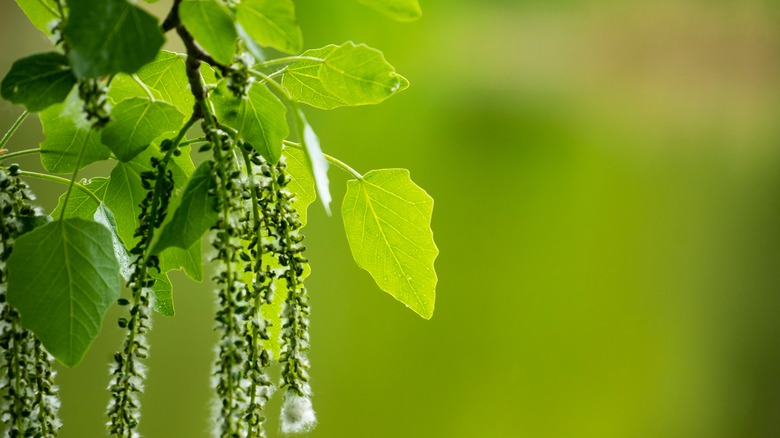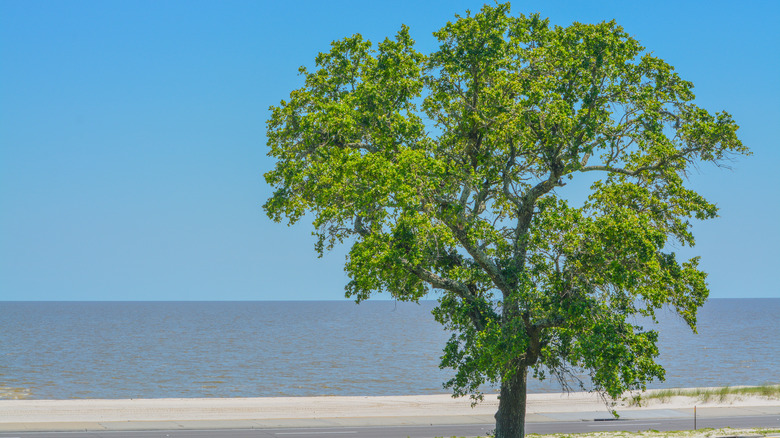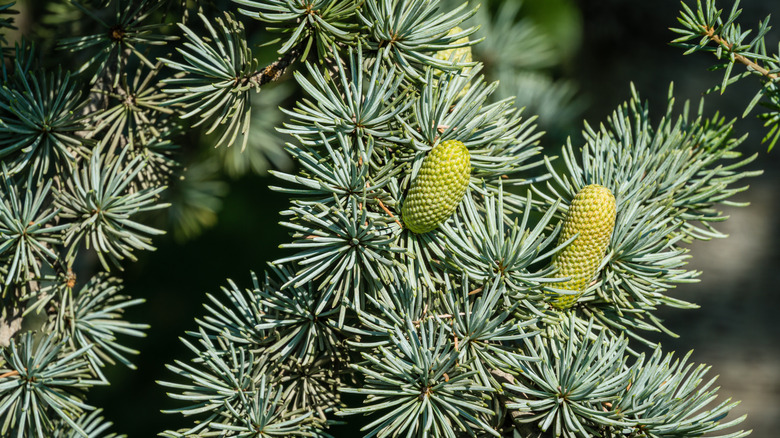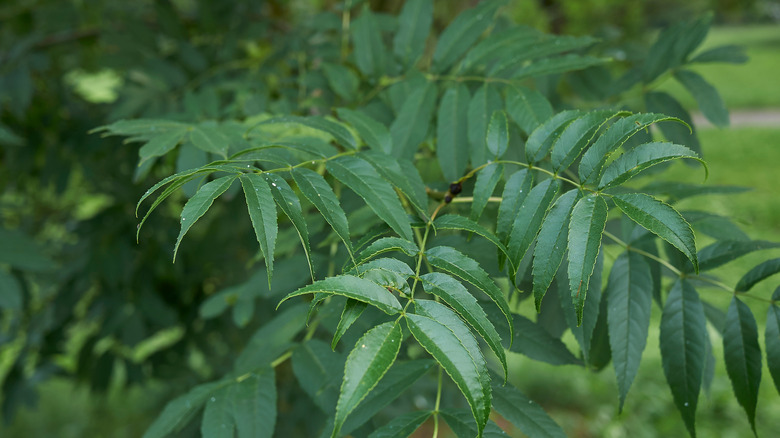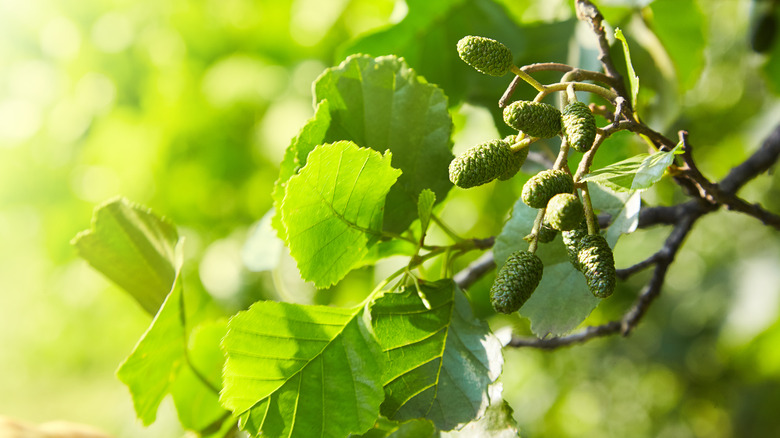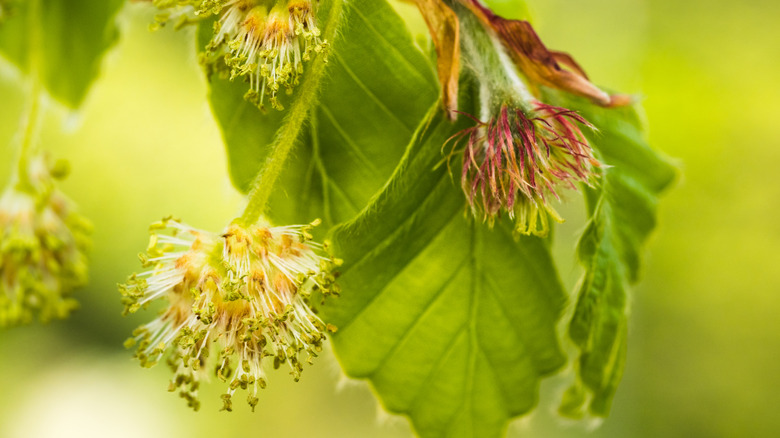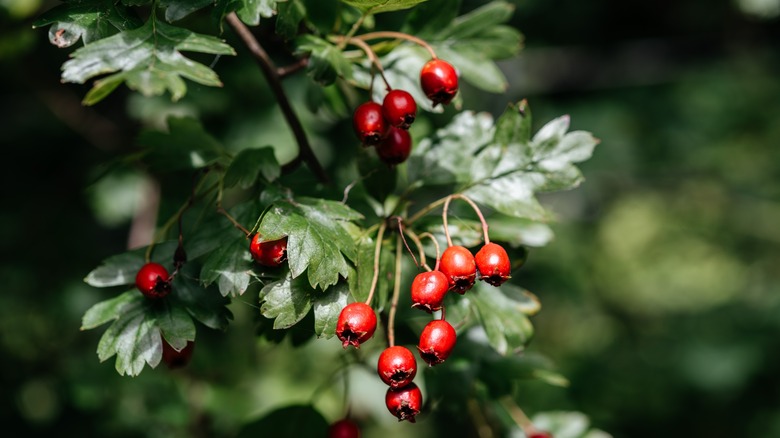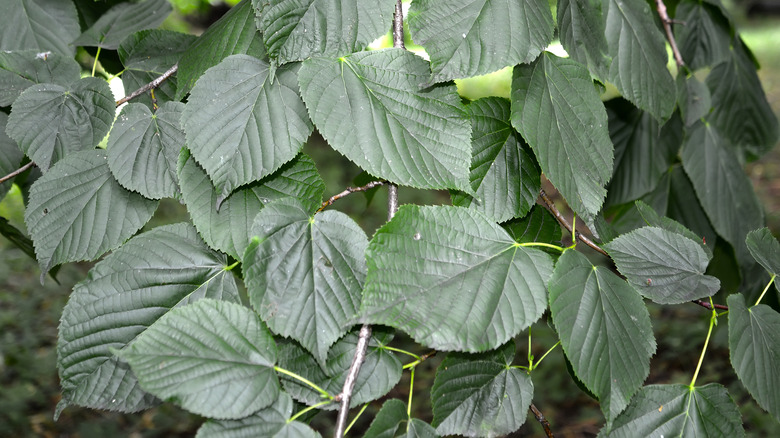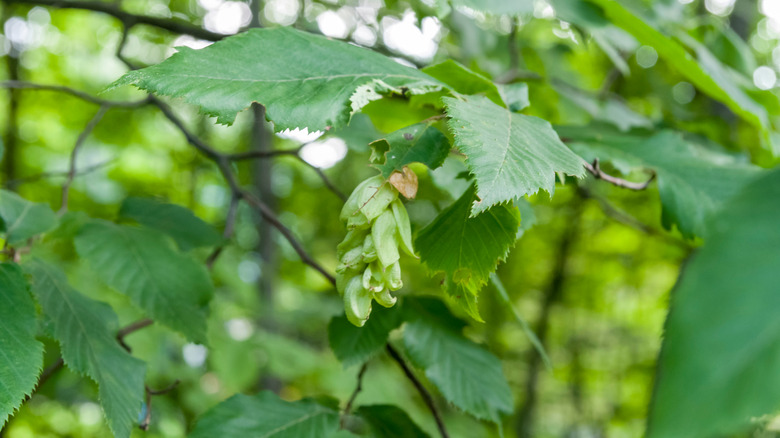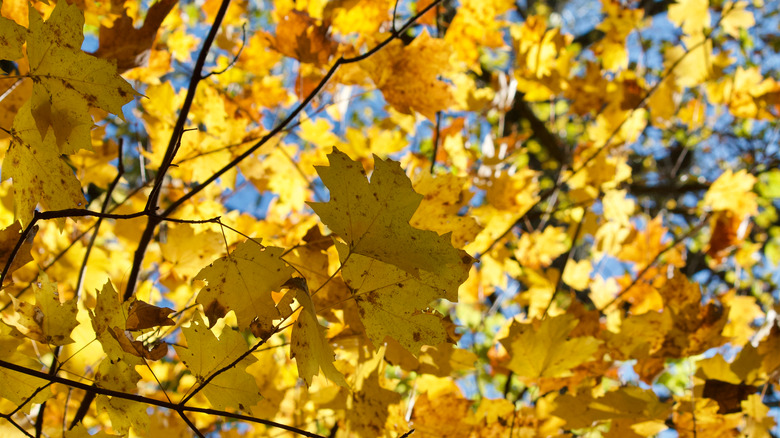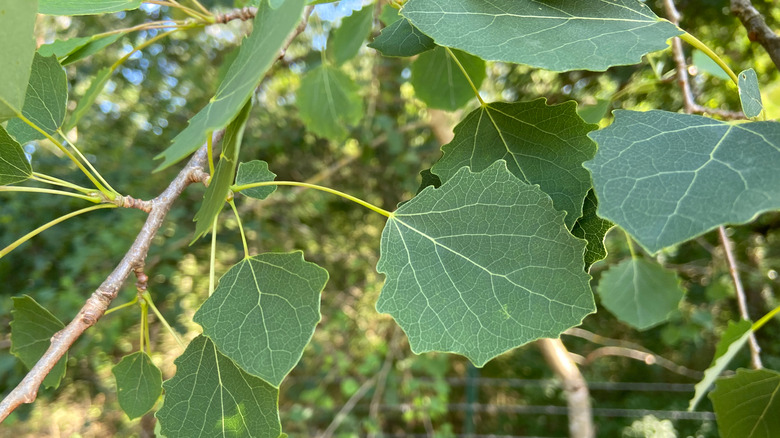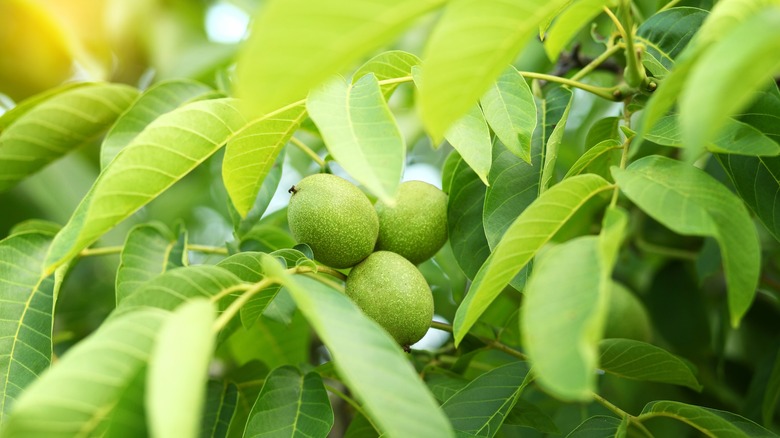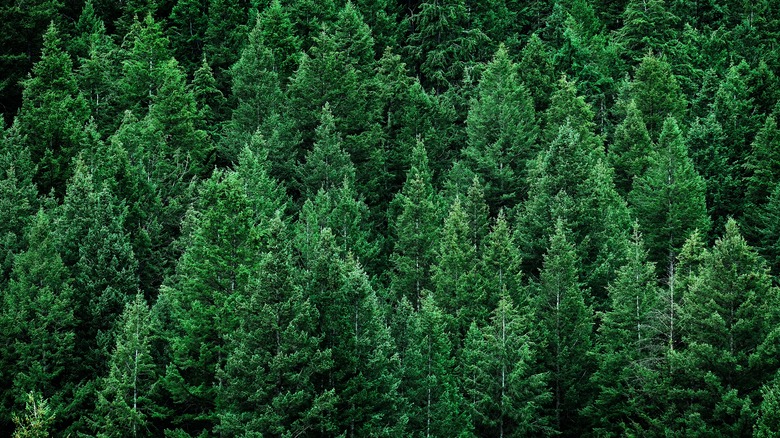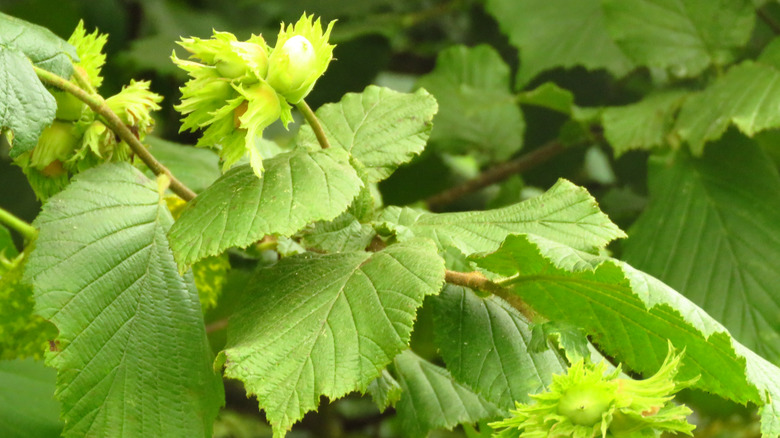15 Trees With Medicinal Properties You Can Grow In Your Yard
Correction 11/1/2022: A previous version of this article stated that oak trees are evergreen. While some are evergreen, most varieties are deciduous.
So, who else is planning their own backyard farm of medicinal plants and trees? As noted by Research Outreach, evidence of plants for medicinal use dates back to the Sumerian civilization (roughly, 6,000 years ago). Unfortunately (or fortunately?), modern herbalism has been demoted to a spring activity whereby you visit the woods or a local park to forage for catnip, motherwort, and dandelion (via The GroveStead).
Surprisingly, the recent push for veganism coupled with the ongoing at-home-gardening trend is starting to revive the fading true meaning of herbalism. According to Frontiers in Pharmacology, ~80% of the world's population relied on herbal medicines for some part of their primary health care, over the past few decades.
Some of the benefits of growing your own herbs over foraging include the educational opportunity, savings, and ease of access, per My Little Green Garden. But herbalism is not limited to only herbs and plants. Some trees, too, pack rich and powerful medicinal properties in their bark, leaves, fruits, roots, and flowers. Read on to learn more about these medicinal trees.
1. Birch
Birch (Betula spp.) is a symbol of new beginnings and birth. According to the Forest School Association, birch tea, made from steeped birch leaves, is a remedy for symptoms of rheumatoid arthritis and urinary problems. Euphoric Herbs adds that the water from boiled birch bark can tone and clear the skin, and that birch sap can be converted into homemade syrup.
Bloom Season: Winter
USDA Growing Zone: 4 to 9
Growing Conditions: Full sun or part shade
Soil Type: Light, well-drained acidic soil
Size: 49 to 82 feet tall, 15 to 30 feet wide
2. Slippery elm
According to Britannica, the slippery elm (Ulmus rubra) is a North American native tree with scented inner bark and hardwood. Per Healthline, the tree's bark can provide therapeutic relief for heartburn and acid reflux, urinary tract inflammation, and a sore throat.
Bloom Season: February, April
USDA Growing Zone: 3 to 7
Growing Conditions: Full sun or partial shade
Soil Type: Moist, limestone-filled soil
Size: 60 to 70 feet tall, 24 to 36 inches wide
3. Cedar
The cedar tree (Cedrus libani) is an evergreen featuring needle-like leaves, monoecious cones, and barrel-shaped leaves (per The Woodland Trust). Cedar can be used as sage to purify the body and as a medicine to combat a scratchy throat, according to Adrian White of the Iowa Herbalist. Due to their size, cedar trees aren't ideal for small spaces.
Bloom Season: Early spring
USDA Growing Zone: 5 to 8
Growing Conditions: Full sun
Soil Type: Well-draining soil
Size: 40 to 70 feet tall, 35 feet wide
4. Common ash
According to RxList, the leaves and bark of ash trees (Fraxinus spp.) are used in medication for constipation, bladder problems, and fever. Plants for a Future adds that white ash can be used to treat soreness and skin irritation, as well as relieve cramps.
Bloom Season: Spring
USDA Growing Zone: 3 to 9
Growing Conditions: Full sun or partial shade
Soil Type: Moist, rich soil
Size: 70 to 80 feet tall, 60 to 90 feet wide
5. Black alder
Black alder (Alnus glutinosa) is a broadleaf tree with low competition tolerance and a lifespan of about 100 to 160 years. Natural Medicinal Herbs claims black alder can be used as a tonic, a treatment for skin problems, and a mouthwash.
Bloom Season: March, April
USDA Growing Zone: 3 to 7
Growing Conditions: Partial shade or full sunlight
Soil Type: Mildly acidic or mildly alkaline, medium loamy and heavy clay soils
Size: 40 to 50 feet tall, 20 to 40 feet wide
6. European beech
European beech (Fagus sylvatica), also known as common beech, is a shade tree common in parks, lawns, and large yards. Per Organic Facts, European beech has antiseptic and antioxidant properties and can be applied in the treatment of digestion issues and headaches.
Bloom Season: Spring
USDA Growing Zone: 4 to 7
Growing Conditions: Full sun or partial shade
Soil Type: Well-drained, acidic, loamy, moist, sandy, and clay soils
Size: 80 to 100 feet tall, 50 to 70 feet wide
7. Hawthorn
The hawthorn tree (a.k.a. thornapple) is a deciduous tree with five-petaled flowers, thorny branches, and ornamental fruits that are used for making wine. The berry fruits of the hawthorn also contain beneficial health properties and have been used as an antioxidant, anti-inflammatory, and for anxiety control (per Healthline).
Bloom Season: Late spring
USDA Growing Zone: 3 to 8
Growing Conditions: Full sun
Soil Type: Nutrient-rich, heavy clay soil
Size: 15 to 50 feet tall, 25 to 35 feet wide
8. American linden
American linden (Tilia americana) is an Iowa native tree with light, smooth bark, hard nutlets, and almost heart-shaped leaves, per Iowa State University Extension. The medicinal uses of American linden tea include the treatment of dysentery, a weak stomach, lung issues, and heartburn, according to Plants for a Future.
Bloom Season: June, July
USDA Growing Zone: 2 to 8
Growing Conditions: Full sun or partial shade
Soil Type: Deep, fertile, well-drained loam and clay soils
Size: 75 to 130 feet tall, 30 to 69 feet wide
9. Eastern ironwood
Eastern ironwood (Ostrya virginiana), also known as American ironwood, is a medium-sized tree with slender twigs and smooth, reddish-brown bark, according to Bates College. The college notes Native Americans tapped into the medicinal properties of the tree's bark, creating home remedies for symptoms like aches, soreness, and coughs.
Bloom Season: Early summer, Late summer, Midsummer
USDA Growing Zone: 5 to 9
Growing Conditions:
Soil Type: Dry and rich, well-drained soil
Size: 20 to 50 feet tall, 8 to 20 inches wide
10. Sugar maple
Per the Missouri Botanical Garden, the sugar maple (Acer Saccharum) tree is a shading tree often used for landscape beautification in lawns and parks. Per Song of the Woods, the tree's sap is a source of B vitamins and calcium while its leaves and bark can be applied to treat the digestive system and used as skin care.
Bloom Season: April, June
USDA Growing Zone: 3 to 9
Growing Conditions: Partial shade, full shade, or full sunlight
Soil Type: Well-drained, medium loams, heavy clay, or light sand
Size: 60 to 100 feet tall, 36 to 49 feet wide
11. Cottonwood
Cottonwood (genus Populus) is a tall ornamental, fast-growing tree that's a common sight all over the United States. Per WebMD, cottonwood's bark, leaves, and buds can be used to treat wounds and coughs.
Bloom Season: Spring
USDA Growing Zone: 2 to 9
Growing Conditions: Full sun
Soil Type: Wet or moist sandy or loamy soil
Size: 70 to 190 feet tall, 50 to 70 feet wide
12. Oak
The oak (Quercus) is a deciduous tree (though some are evergreen, per the University of Florida) that can live for 400 years or more, per New World Encyclopedia. The trees are widely planted as canopy trees, and according to HerbaZest, an oak tree's bark and leaves have been used to combat skin inflammation, relieve respiratory problems, and treat infections.
Bloom Season: Spring (March to May)
USDA Growing Zone: 3 to 9
Growing Conditions: Partial shade or full sunlight
Soil Type: Acidic, Alkaline, loamy, moist, sandy, well-drained, and clay soils
Size: 60 to 100 feet tall, 50 to 90 feet wide
13. Walnut
Walnut (juglans) is a popular deciduous tree in the furniture and carpentry industries. Per a study published in Pharmacognosy Reviews, the walnut tree's leaves, flowers, and roots have been studied for their therapeutic effects in the treatment of diabetes, rheumatic pain, malaria, fever, and skin disease.
Bloom Season: April, May
USDA Growing Zone: 4 to 9
Growing Conditions: Full sun.
Soil Type: Organically rich, moist, well-drained, deep soil.
Size: 100 to 120 feet tall, 50 to 75 feet wide
14. Pine
According to Britannica, pine (pinus) is a coniferous evergreen native to northern temperate regions. Pine is a versatile tree, with edible seeds, and as noted by the Chestnut School of Herbal Medicine, pine tea can be served as a remedy for a cough, fever, or cold.
Bloom Season: May, June
USDA Growing Zone: 6 to 9
Growing Conditions: Full sun
Soil Type: Well-drained, average-to-medium-moisture soil
Size: 60 feet tall, 40 feet wide
15. Hazelnut
Hazelnut (Corylus sp.) is another deciduous tree with brown, oval-shaped edible nuts, rounded leaves, and pale yellow flowers. According to Medicinal Herb Info, the shrub has been used as an astringent and a fever reducer.
Bloom Season: Late summer
USDA Growing Zone: 4 to 9
Growing Conditions: Full sun or part shade
Soil Type: Acidic, alkaline, loamy, moist, rich, sandy, well-drained, and clay soils
Size: 15 to 15 feet tall, 10 to 12 feet wide
